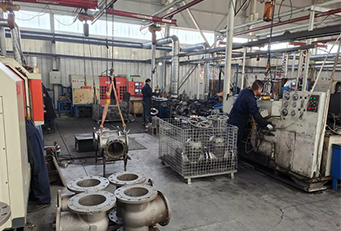Electric Actuated Butterfly Valve for Efficient Flow Control in Piping Systems
The Electrical Butterfly Valve A Comprehensive Overview
The electrical butterfly valve is an essential component in various industrial applications, owing to its efficient control of fluid flow. This valve operates on a simple principle it utilizes a rotating disc to regulate the passage of fluid within a pipeline. When the valve is fully opened, the disc is parallel to the flow direction, allowing maximum fluid passage. Conversely, when closed, the disc obstructs the flow, ensuring tight sealing. The integration of electric actuators makes electrical butterfly valves a preferred choice in many modern systems, adding precision and ease of control to fluid management.
One of the primary advantages of electrical butterfly valves is their rapid response time. Unlike traditional manual valves that require physical effort to operate, electrical versions can be controlled remotely, making them ideal for large-scale operations or hazardous environments. This characteristic enhances operational efficiency as adjustments can be made seamlessly without the need for personnel to be present at the valve location. Industries such as water treatment, HVAC, and chemical processing benefit greatly from this functionality.
Additionally, electrical butterfly valves offer enhanced precision in flow control. The electric actuator can be programmed to open or close the valve to very specific degrees, allowing for more precise control of flow rates. This capability is especially crucial in processes where minute adjustments can lead to significant changes in product outcomes, such as in pharmaceutical manufacturing or food processing. Moreover, these valves can be integrated into automated systems with supervisory control and data acquisition (SCADA) capabilities, providing real-time monitoring and adjustments that optimize operational efficiency.
electrical butterfly valve

Another significant benefit of electrical butterfly valves is their compact design. The simplicity of the butterfly mechanism allows for a smaller footprint compared to other valve types, which is particularly advantageous in confined spaces. This compactness also makes for lighter installations, reducing the structural support needed for piping systems. Industries often face challenges with space constraints, making the use of electrical butterfly valves an attractive solution.
Maintenance and durability are other critical aspects when considering valve selection. Electrical butterfly valves are generally easier to maintain than their mechanical counterparts. The fewer moving parts reduce the likelihood of wear and tear, often resulting in longer lifespans and lower maintenance costs. Additionally, advancements in materials science have led to the development of high-performance elastomers and polymers that resist corrosion and extreme temperatures, further increasing the valve's longevity.
However, it is essential to consider the limitations. Electrical butterfly valves require a reliable power source to operate, which might not be feasible in some remote locations or during power outages. Furthermore, issues such as the initial cost of installation and the requirement for electric wiring can be deterrents for some users. It is also crucial to ensure that the actuator chosen is compatible with the fluid types and conditions expected in the application to avoid any operational failures.
In conclusion, electrical butterfly valves offer a modern solution for fluid control in numerous industrial applications. Their ability to provide rapid response, precise control, compact design, and ease of maintenance makes them a preferred choice for many engineers and process designers. As industries continue to evolve and automation becomes increasingly prevalent, the role of electrically actuated butterfly valves will likely become even more significant, driving efficiencies and innovations in fluid management systems around the world.
-
Breakthrough in Domestic Low Temperature Valve Technology in ChinaNewsAug.18,2025
-
From Machinery to Intelligent Brain: The Digital Transformation Wave of the Valve IndustryNewsAug.18,2025
-
PCVEXPO 2025NewsAug.18,2025
-
The Key to Fluid Control: Exploring the Advantages of Ball Valves in Industrial SystemsNewsJul.09,2025
-
The Versatile World of 1, 2, and 3 Piece Ball ValvesNewsJul.09,2025
-
Stainless Steel Ball Valves: The Ideal Choice for Efficient Flow ControlNewsJul.09,2025
-
Optimizing Fluid Control with Ball Float ValvesNewsJul.09,2025




